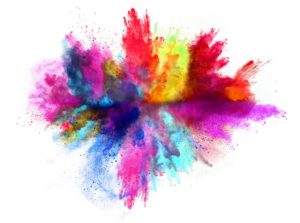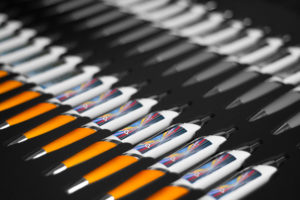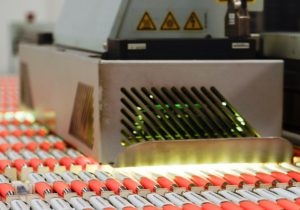What is Full Colour Digital Printing?
Full-Colour printing is simply the industry’s terminology for any printing process that is capable of producing photographic-style images. It is referred to as ‘full-colour’ because it aims to produce the full gamut of colours in the visible spectrum. In reality it always falls short of that aim because the process is constrained by technology, substrate and the small number of ink colours allowable on the printing press (usually four). However, despite the physical limitations of the printing processes, the resultant printed image looks stunningly colourful and for all intents and purposes a commercially acceptable representation of the original image.
Digital Printing simply refers to any printing process that recreates a digital image, stored electronically, onto a variety of media, such as paper, plastic, metal etc. In other words there are no printing plates, screens, dies or cliches used in any part of the process. It should be noted that however the image may look on the computer, the output device for printing (the print heads) will always reduce the printed image to a series of dots of varying size and colour.

Benefits of Full Colour Digital Printing
- Cost-effective when multiple colours are required.
- Cost-effective for short runs as no printing plates are required
- Precision registration between colours
- Repeatability of colour on repeat orders
- Stunning photographic images at minimal cost
- Can approximate to Pantone colours without paying for specific colour match
- Reduction or complete removal of minimum order quantities (see No-Minimum.co.uk for more information)
Digital Printing Methods
We employ two different methods for creating full colour images on our writing instruments, direct to the substrate or indirectly through a transfer system. The latter is employed on cylindrical pens and pencils where the image needs to be wrapped around the circumference. Direct to substrate printing can only print line-of-sight and is therefore possible on flat or slightly curved products only.
Artwork for Digital Printing
If your artwork is photographic, or contains gradients, shading or a large number of colours, then it will only be suitable for digital print.
Image files should be supplied as TIFF files (.tif) or Photoshop files (.psd). JPEGs (.jpg) are usually used for screen display, but may be suitable for printing if they are high resolution. We recommend an image resolution of 600 dpi, with 300 dpi the minimum. Please note that the print output will only be as good as the artwork you supply. Artwork that is low resolution is unlikely to yield a good result.
Your image file should be saved as a CMYK colour profile, not RGB. RGB colours are used for screen display while CMYK colours are used for print. If you supply RGB artwork, we will convert it to CMYK for printing but this may result in some colours being subtly altered. Also ensure that blacks are 100% black and not composed of other colours.
Contact us if you require any advice about the suitability of your artwork for print.

Full Colour Printed Product Range
We have a comprehensive range of writing instruments and accessories suitable for full colour printing, including those designed by us especially for digital print. These exclusive lines have been developed to offer photographic-quality reproduction to the largest possible print areas.
Click HERE to explore our full range of full colour digitally printed products.


Join the conversation
Certification: